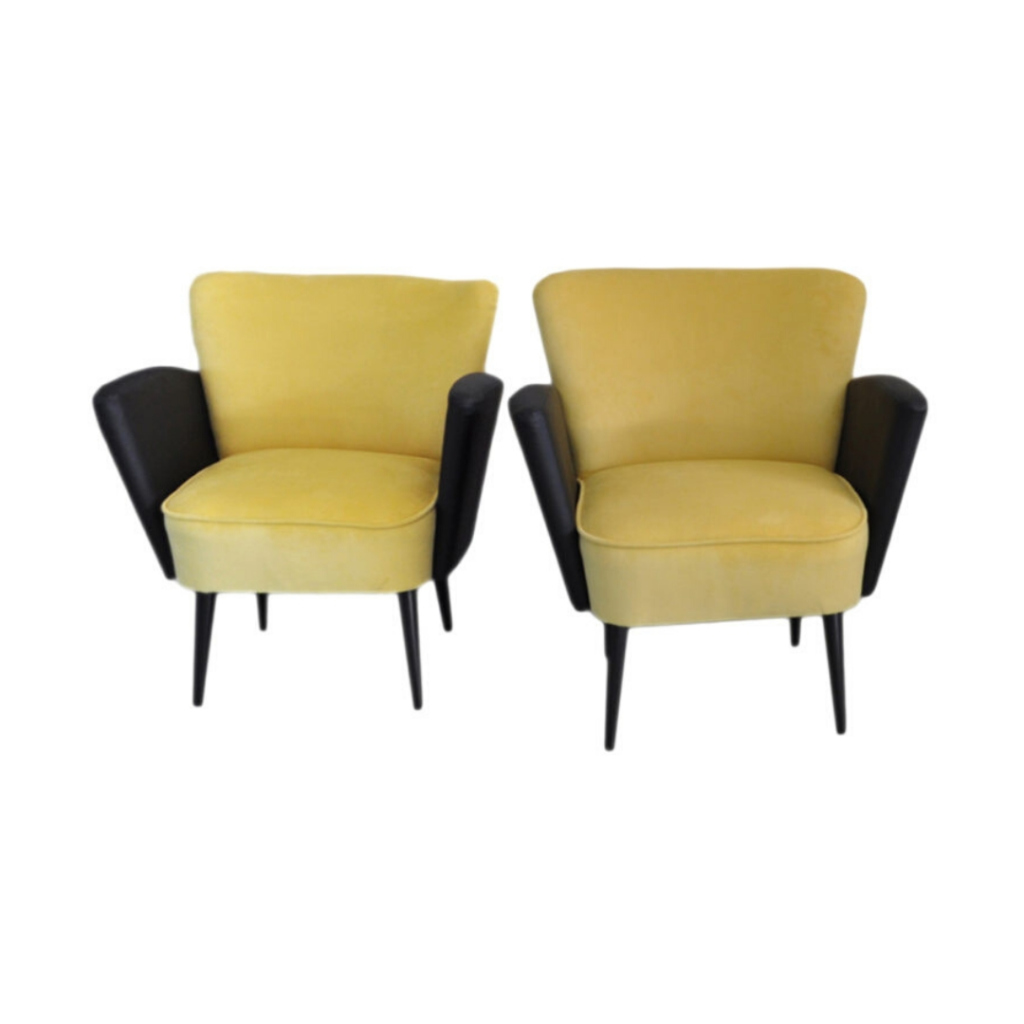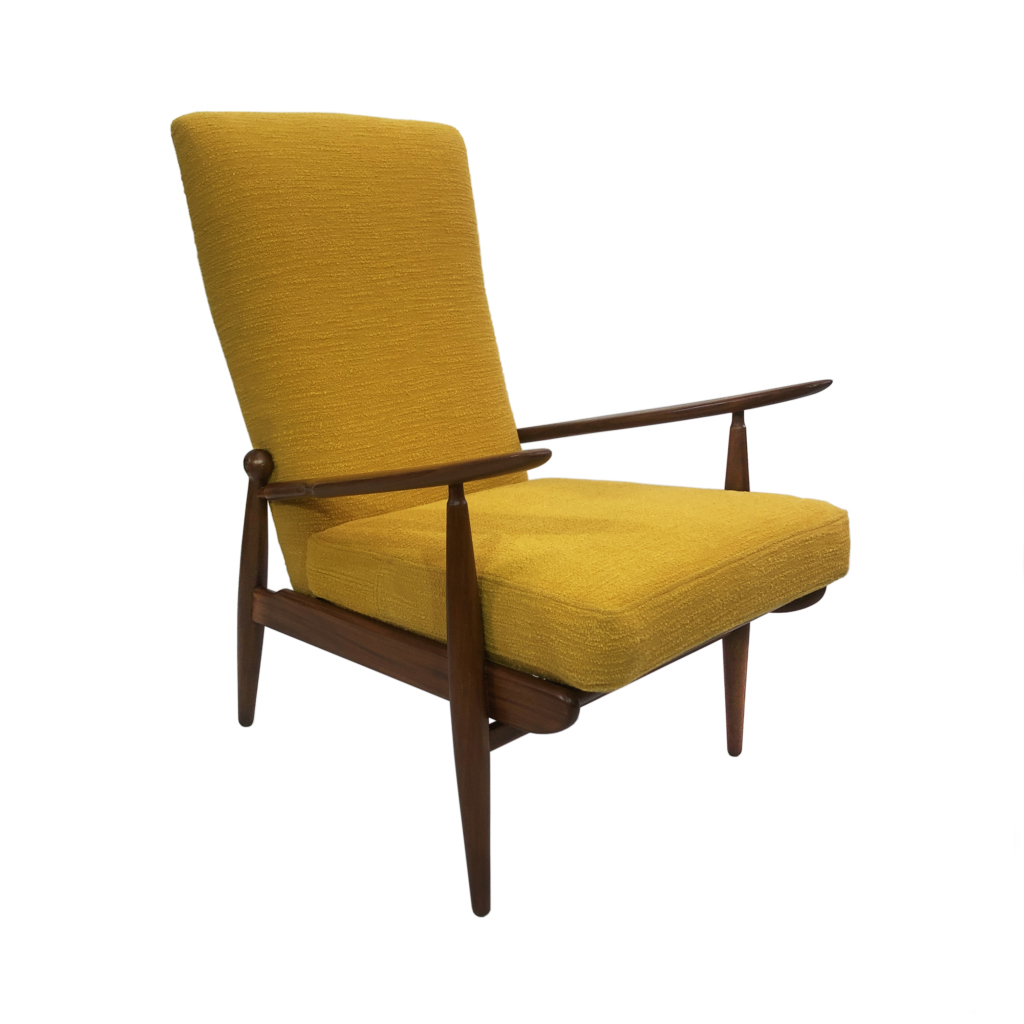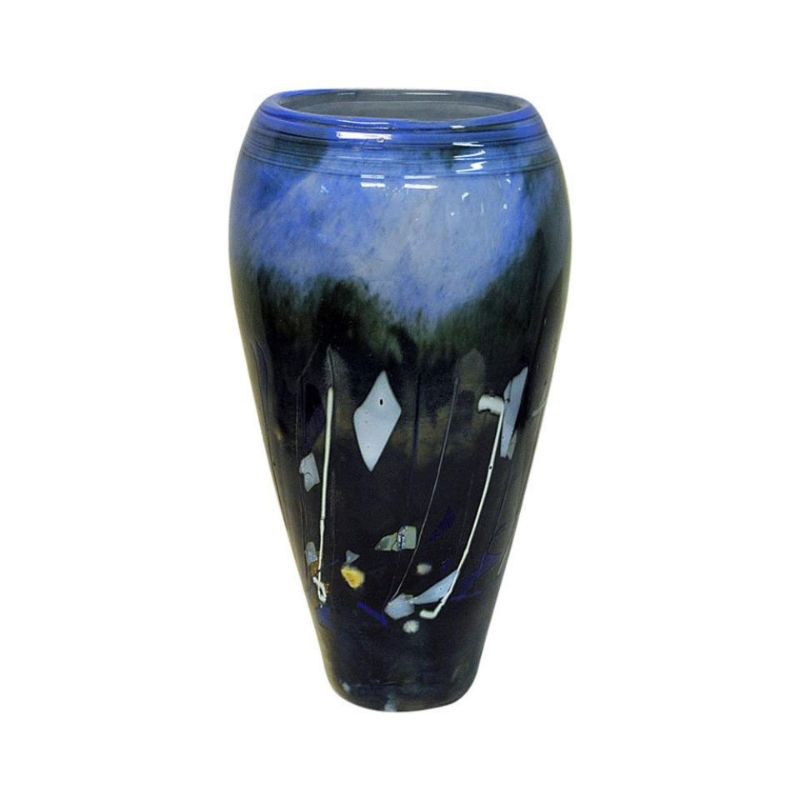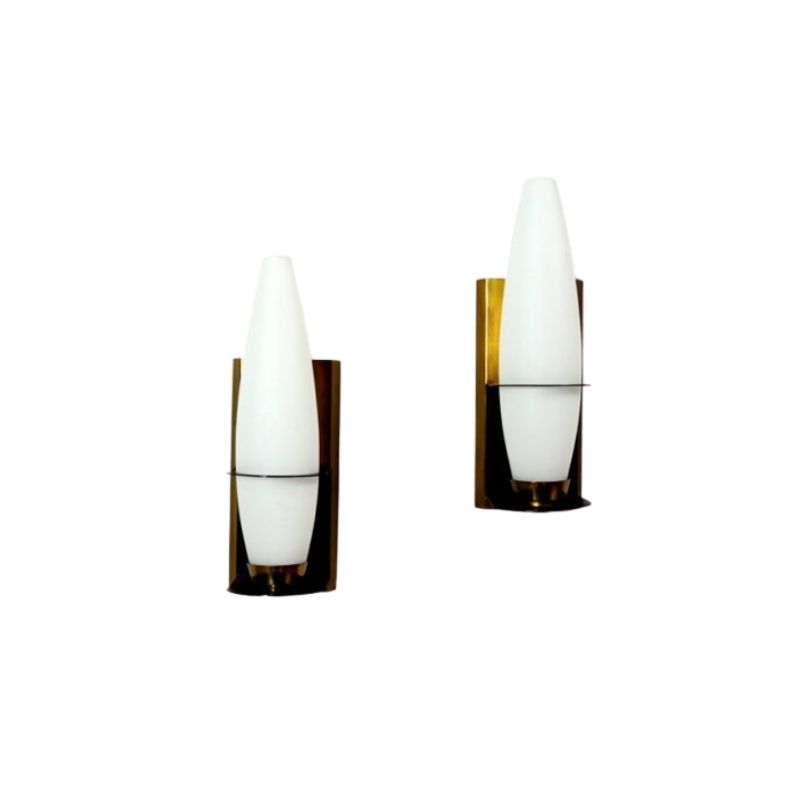@andersen - good question. I am not too familiar with that design. The model number suggests it was designed in 1940, but it does not appear in the Niels Vodder booth photos for '39, '40, or '41 in the Grete Jalk books. Those books do not include 100% of the furniture for each year, so it is possible that the NV40 was presented one of those years, but just not selected for the books (developed during the mid 80's).
I have also gone through a number of old photos from the archives, and do not see the NV40 in there, either as a studio photo or in a booth/house setting. I don't believe this desk/vanity was part of the initial house furniture in 1942. And I have photos of Juhl's apartment from a year or two before the house was built. I do not see the desk/vanity there either. Rather he chose to use the vanity and vanity chair from the 1938 exhibition. The dining chairs in his apartment were not designed by him, so my guess is that the NV40 was designed without an accompanying chair in mind.

Thanks for your answer. Interesting is that the space between the legs of the NV40 appears to be 54 cm, while most of Juhl’s chairs are larger and won’t fit underneath. From a design perspective, is it important that a chair fits under a desk ? Apart from saving space in a room.
Best regards
Sep 30th is a good date for an update: 75 years ago today, the Chieftain Chair (and 5 other Finn Juhl designs) were unveiled to the public during the opening of the 1949 Copenhagen Cabinetmakers Guild Exhibition.
This exhibition was arguably the peak of Danish Modern, with some of Denmark’s greatest designs unveiled during the 17-day run. Finn Juhl won the first prize in the design competition earlier in May, and six new designs were made/presented at this exhibition by Niels Vodder, who was assigned Booth #9 that year. As the watercolor plan demonstrates, Juhl was fully aware of the room layout during the competition, and created a holistic design, where booth design and artwork were both considered to help present the new furniture designs. Living room designs were placed on the museum floor on one side, while a raised podium was installed for the dining room pieces. Demonstrating extreme attention to detail, he even painted the mounted watercolor boards in a booth elevation; the same watercolors which he was in the process of painting.
The most significant of these six new furniture designs was the grand Chieftain Chair, of which Juhl later commented, “I probably felt like designing something a bit more pompous ...” In contrast to King Frederik IX’s conservative regal pose for opening day photographers, future Prime Minister Jens Otto Krag opted for a less traditional seating position, no doubt prompted by Juhl himself to demonstrate how the chair’s flexibility allowed the user to shift around for comfort.
This exhibition was also the first time the public saw the six watercolors that Juhl had painted himself for the competition. These six mounted boards were displayed together in public one more time: the 1950 Finn Juhl exhibition at Charlottenborg Palace. Five of these watercolors returned to the Designmuseum Danmark four decades later, when Juhl’s widow donated his professional archives to the museum shortly after his passing in 1989.








Thank you for adding to this fascinating, informative and endlessly entertaining (at least for me) thread! I could spend an hour just looking at the images, there's so much to see.
And the commentary is excellent, as usual. But, here's where I'll get a little nit-picky about terminology. To me, referring to the renderings as "watercolors" seems a bit misleading. While watercolor is one of the mediums involved, the term generally connotes fine art, which they are not. Hand drawn? yes. Hand inked? yes. Hand colored? yes. But they are technical drawings or illustrations and, as such, I feel should be described so.
On the gripe scale, it's less than minor. Really, your work and depth of knowledge are top-notch and I'm grateful for your generosity in sharing these with us here on DA Forum. The risk in doing it sometimes results in this kind of shit, though. We're all critics after all. So, don't forget, you brought this upon yourself!
Have a great day and, again, thanks much!
@tktoo Thank you for your interesting thoughts. It is obvious that a conceptual distinction can be made between technical drawings coloured with watercolours and works of art created with watercolours. On the other hand, the term Watercolors has become established for precisely these coloured technical drawings, and not only for Finn Juhl. Practically every architect – at least in Denmark from the 1930s to the 1960s – used watercolours to colour their drawings during their training and in their work. And these works are referred to as watercolours everywhere. My suggestion would be to either see Watercolor as a homonym: as a term that has two different meanings. In this case, a) a work of art based on watercolours and b) a technical drawing coloured with watercolours. Or to agree that there is always a huge range between high-quality and poor-quality work in art as well. A three-year-old can paint with oil paints. The result would have nothing in common in terms of quality with the works of Rembrandt, van Gogh or Picasso, but it would still be an oil painting. Or would it?
"People buy a chair, and they don't really care who designed it." (Arne Jacobsen)
@tktoo, I don't have a big issue with how the term "watercolors" is defined, nor with you bringing it up. You might have unintentionally opened up a Pandora's Box with my below reply.
One of the key items I was looking at the day before the auction was whether the auction lot was watercoloring done on a reproduced drawing or hand-copying drawing. Either one would have indicated that the watercolor was not the original concept design artwork, but rather something created afterwards. I was quite pleased to see during the preview session (even through a magnifying loupe that I had brought with me) that the watercolor clearly had original graphite pencil construction lines on the paper surface. Pencil construction lines would not appear on a hand-traced drawing, since there is no need for them. What was also interesting to see was that some pencil lines were overdrawn with black ink, while most were left without black ink, and with the watercolor ink providing the visual edge of the form (1st photo). In other words, the original watercolor boards are not painting filling in a fully-drawn black ink technical drawing. Rather both black ink edges and translucent watercolors surfaces are integral parts of the final work. Neither can stand alone without the other.
I did see other Finn Juhl watercolors in the Art Institute archives that were hand-painted on hand-traced drawings. Those watercolors did not have any pencil construction lines, and every edge was delineated by a black ink line (2nd photo), more analogous to high-quality paint-by-numbers. Those watercolors were used by Juhl for marketing.
While Finn Juhl's watercolors may have had their origins in technical drawings, by 1948, they had in my opinion, evolved into the realm of fine art, which is one of the many reasons I love these watercolors.
Having said that, I take no umbrage should others have differing opinions.


Again, thank you for your thoughtful and nicely-written response!
Admittedly, my argument makes a point of esoteric minutia involving accuracy of descriptive terms that would only really matter to experts (and/or cranky retirees who allow themselves to be bothered by perceived misuse of such). What I know is that if I had referred to your work on paper as a "watercolor" in a professional setting, I would have been corrected. Not as an admonishment, per se, but more in a way of encouraging accuracy and consistency. You may, or not, thank me later.
Often with works like these we must consider the maker's intent as primary. Without documentary evidence to the contrary, we can understand a lot from Juhl's choosing to tack the the boards directly to a wall, unframed, as graphic elements of an exhibit featuring his furniture designs. To me, that alone pretty much says it all.
I could go on and on. But my intent here, if not obvious, is to help spur the kind of dialog once more common on DA Forum.
If you need any help, please contact us at – info@designaddict.com










